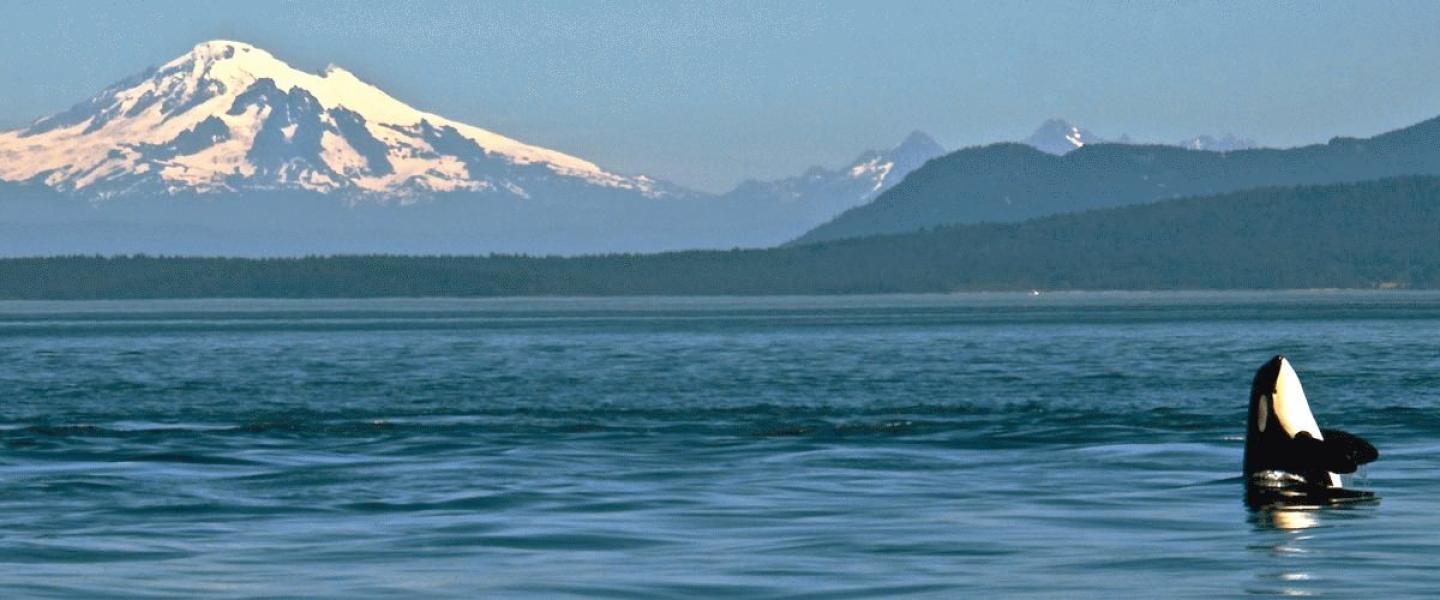
Each day as we cruise out of Friday Harbor, with hopes of seeing whales drifting about in our heads, I start the guests of with an introduction to the San Juan Islands and the all the wonders the islands offer. I often mention in this introduction that we as naturalists love questions. Not only do we have a passion to educate, we all have a passion to share the facts that YOU as a guest want to know. As an educator, I feel that people retain information better if it is something they are interested in. Boy oh boy did that statement have an effect today! We had a boat load of question asking folk aboard the Sea Lion! I always love being able to share my knowledge of these islands and the amazing animals that reside throughout them through answering questions related to people's specific interests.
We met up with the Southern Residents as they crossed the Haro Strait and began milling off of False Bay. The whales traveled this way and that, breached and back dived, splashed, traveled and fished. We saw a young calf, many females, and quite a few adult males. Throughout most of the trip, we saw whales traveling or milling in groups of 2 or 3. It was a fabulous time spent with the whales and we had some incredible views!
On our way back home, we passed through Cattle Pass. This pass is a narrow waterway that cuts between San Juan Islands southern tip and Lopez Islands south side. Here in the San Juan Islands we have 4 tides a day (2 high, 2 low) and 8-12 foot tidal fluctuations. This means there is A LOT of water continually rushing in and out. Cattle Pass is a narrow pass and is adjacent to two large Straits, the Haro Strait and the Straight of Juan de Fuca. Oh, how I so thoroughly enjoy driving through this pass at certain points in the tidal exchange. Water doesn't like to be uneven, so will do its best to even itself out as quickly as possible. This means that, as it squeezes it way through Cattle Pass, the water moves fast at times - up to 7 knots! It also will crash into itself or underwater ridges and get pushed straight up! This is called an upwelling zone, and it one of the main reasons our water is a uniform temperature and nutrient level top to bottom (2 feet down will be the same temperature as 200 feet down). The rushing water also causes whitecaps, back eddys, whirlpools and other turbulence. Although I see this amazing event sometimes twice a day, it never ceases to amaze me! As we cruised through the pass, I explained all of the tidal action that was surrounding us to the guests, and we all took time to awe at it collectively.
All in all, it was yet another fabulous day out on the water!
Ashley, Naturalist